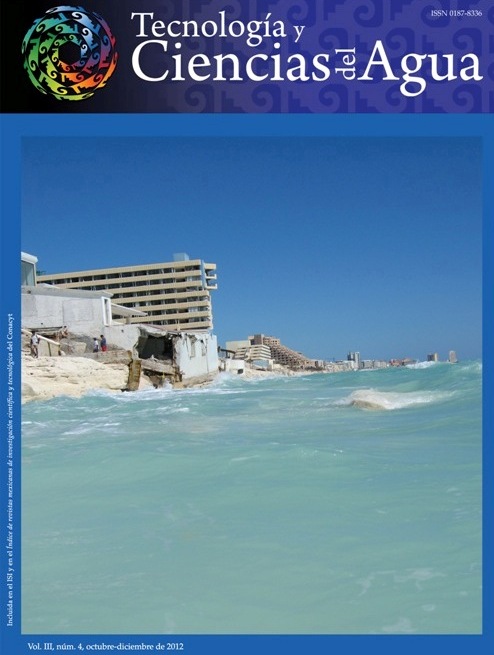Description of mass and energy transfers in agricultural drainage systems with the Richards and Boussinesq equations
Keywords:
drainage flow, nonlinear radiation, fractal radiation, variable storage coefficient, water table drawdownAbstract
Two mechanistic models to simulate water flow in a subsurface drainage system are analyzed. The first model solves the Richards equation on a two-dimensional domain using a nonlinear radiation condition for the perimeter of the drains. The second model uses the Boussinesq equation with the variable storage coefficient on a one-dimensional domain, applying fractal radiation boundary conditions to the drains. The descriptive capacity of both simulation models was evaluated, considering the case of a free shallow aquifer with null vertical recharge. The results indicate that the approach using the Richards equation provides better descriptions of mass and energy transfer processes in agricultural drainage systems and the Boussinesq equation cannot simultaneously describe the mass and energy transfers described with Richards equation. It is shown that when the Boussinesq model is used to solve inverse problems to estimate hydraulic conductivity at soil saturation (Ks), the values obtained are greater than those calculated with the Richards equation model. In addition, when Ks is calculated using the Richards model and the value obtained is used in the Boussinesq model to calculate the separation between drains, separations are obtained that are shorter than necessary.Downloads
Published
How to Cite
Issue
Section
License

This work is licensed under a Creative Commons Attribution-NonCommercial-ShareAlike 4.0 International License.
By Instituto Mexicano de Tecnología del Agua is distributed under a Creative Commons Attribution-NonCommercial-ShareAlike 4.0 International License. Based on a work at https://www.revistatyca.org.mx/. Permissions beyond what is covered by this license can be found in Editorial Policy.









